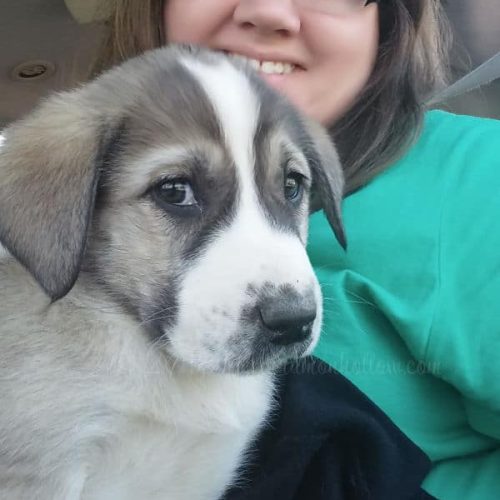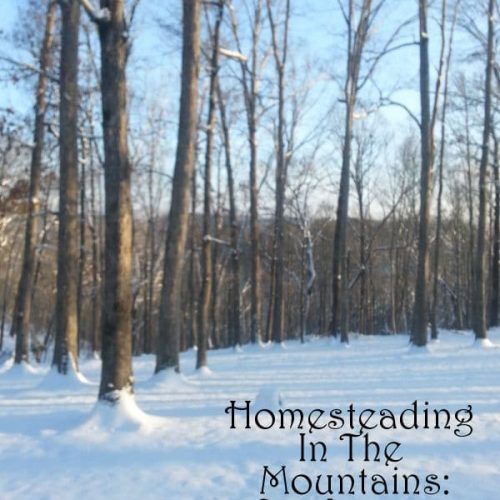Every place Clay and I have ever lived in, even in the country, had city water. When we first looked at our homestead to buy, we were a little worried by the fact that it has a cistern and uses a rain water catchment system to collect rain water as well as the option to haul water from a local city water source. Ok, more than a little worried!
We were not and are not planning on off-grid living, even though we really want a home that can be self-sustainable if need be. An alternate water source seemed doable for our family. And we do like the idea of being prepared in the event a disaster strikes. This system provides that.
Items may have been received as a thank you for posting or to facilitate a review. Additionally, affiliate links may have been used in this post. Purchases made through our links earn us a small commission to pay for our website, without any fees passed on to you. Read our full disclosure policy for more info. Thank you for your support!
MEDICAL DISCLAIMER: The statements made regarding these products have not been evaluated by the Food and Drug Administration.We are not doctors and this is not to be considered medical advice. As with any product, supplement, etc, ALWAYS use with caution, do research and consult your doctor before use! Use at your own risk. Discontinue use and seek medical attention if any adverse reactions occur.
Essential oils are VERY concentrated, do absorb into the bloodstream and some may interfere with certain medications and health conditions. For instance, I have high blood pressure and need to be careful when using rosemary essential oil. So, please, do your research before use and use with caution. With that said, essential oils can be an amazing addition to your health and wellness and natural home. This is in no way intended to be used as medical advice and we cannot be held responsible for your use or results.
Some of our initial thoughts and questions about this rain catchment system were:
- How does it work?
- Is it safe to use?
- Can you drink it?
- What exactly can you use it for?
- What if it doesn’t rain?
- Is there another source of water?
- Will we ever tie into the city water system?
Those questions and concerns were quickly answered and our minds put to ease. So much so that we decided to buy the property!
To answer the first question: How does it work? Well, it works by using gutters and catching the rainfall that comes off the roof. The gutters divert the rain into the cistern, instead of onto the ground. So anytime it rains, our cistern gets a good drink of water! There is a pump connected between the cistern and house that pumps the water in whenever we need it. So faucets, toilets, showers, etc. are used like normal.
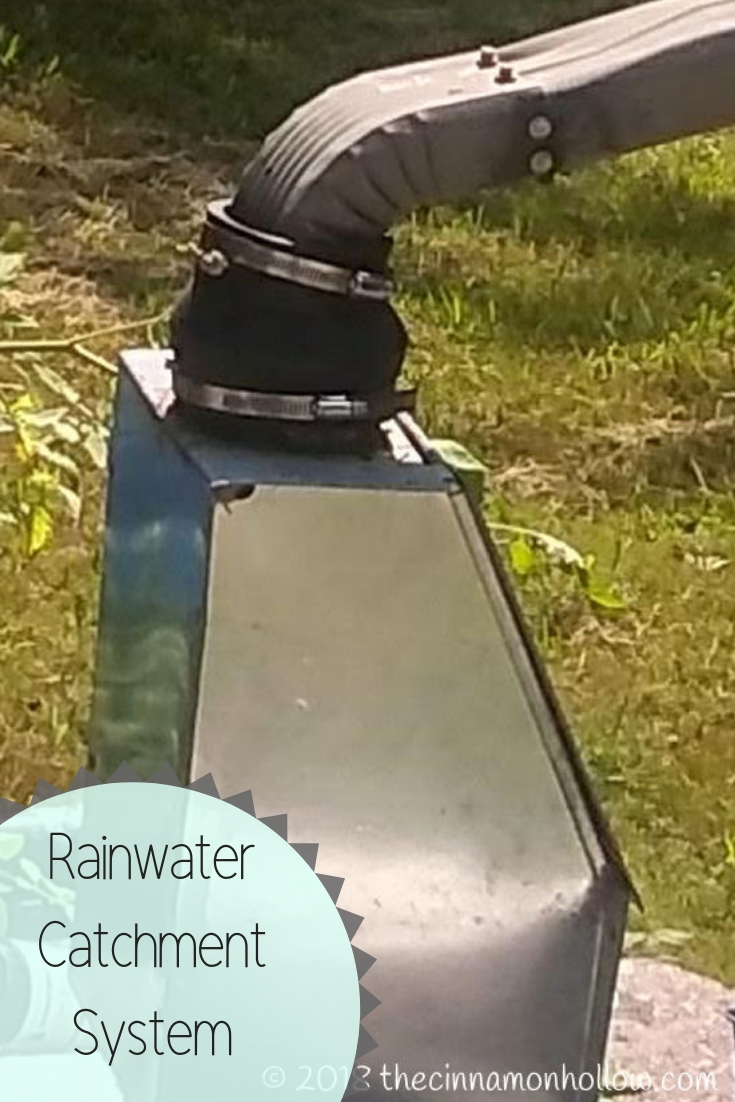
Second question: Is it safe to use? Yes.
The gutter is connected to a filter that filters the water before it enters the cistern. This is sort of a pre-filter. We add activated charcoal into this tank. The water flows through the charcoal before going into the cistern and filters out any rooftop sediment, bird droppings, etc.
We’re installing a “whole house filter” to filter all the water again before it reaches the inside plumbing. This will take care of anything that is in the cistern and make the water safer. We also have under the sink filters in the bathroom and kitchen and we add Well Safe to the water. You can’t be too cautious when it comes to your water!
Third: Can you drink it and what can you use it for? Technically, you probably could drink it but we don’t, for now. We buy jugs of water. We do wash and rinse our dishes with it but I can always fill a wash tub with rinse water and add a drop of bleach or food grade sanitizer to it to kill any bacteria, if I’m concerned. We follow a lot of safety protocols with sanitizing the water so I think we’re good.
And yes, I know there is a difference between sanitizing and disinfecting:
Disinfecting kills germs on surfaces or objects. Disinfecting works by using chemicals to kill germs on surfaces or objects. This process does not necessarily clean dirty surfaces or remove germs, but by killing germs on a surface after cleaning, it can further lower the risk of spreading infection.
Sanitizing lowers the number of germs on surfaces or objects to a safe level, as judged by public health standards or requirements. This process works by either cleaning or disinfecting surfaces or objects to lower the risk of spreading infection
The fact that it comes off the roof where birds and squirrels may leave droppings, dust gathers, etc sort of turns me off drinking it, even though we do use it for dishes and showers.
So, we use bottled water for drinking and cooking as well as brushing teeth. We use the cistern for showering, laundry, dish washing and toilet flushing.
What if it doesn’t rain? Is there another source of water? Yes! While we also have backup holding tanks at the back of the house, collecting rain from those gutters, we also have another 250 gallon tank that we can haul water with. We could also probably add this sanitizer to the tank we haul water in as well as the other catchment tanks. There is a water station 15 miles away and when our cistern is low or no rain is in store, we haul a few loads of water. This is city water that has been treated and we pay a minimal fee to fill our tanks.
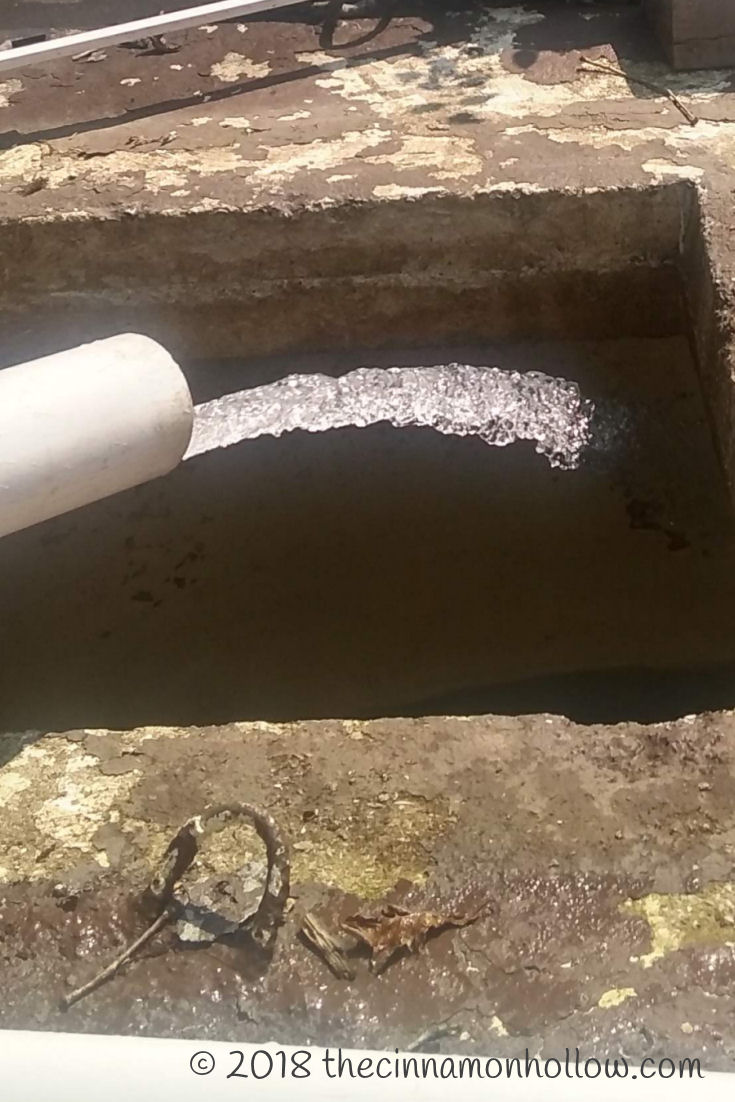
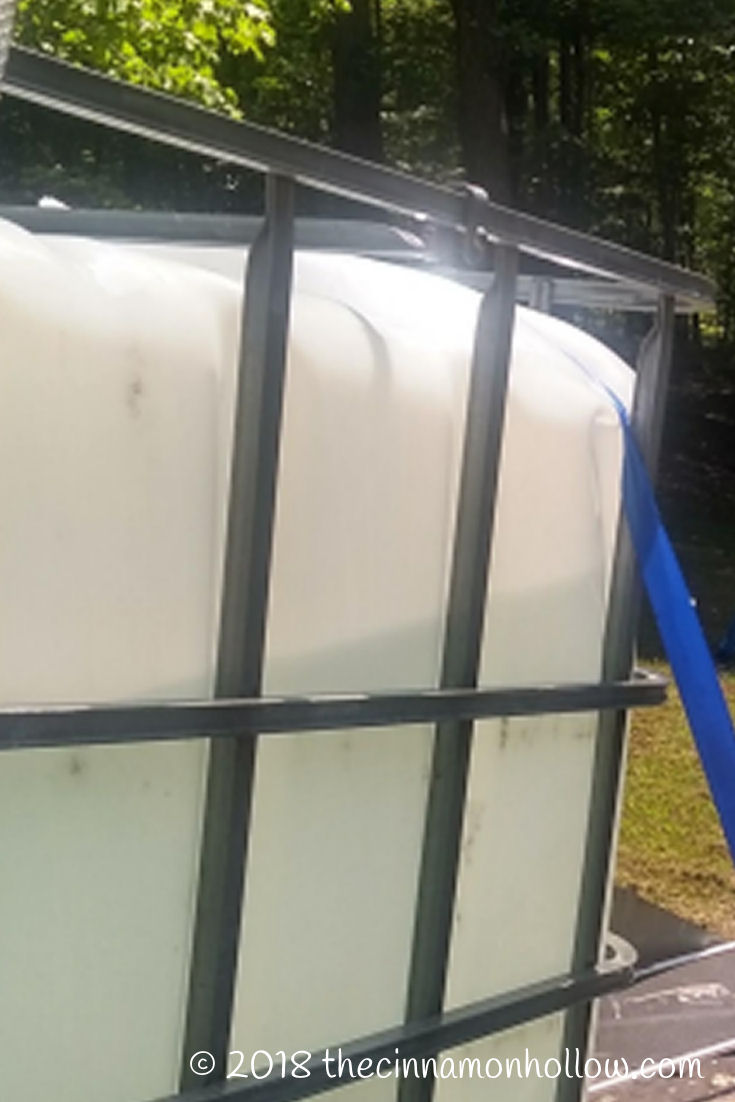
Lastly: Will we ever tie into the city water system?
Well, no. We live in a mountain region and that is not an option here. And for the foreseeable future, it won’t be. Unless city water is made available in our area, which it won’t, we will continue to use our rain catchment system and collect water in and haul water to our cistern. If it ever becomes available, we’ll re-evaluate and check into the cost of tying in as well as options available to us at that time.
I’ve been asked if I miss having city water? Sometimes I do. It’s nice to not have to constantly worry if the cistern is full and to not have to keep an eye on rainfall or haul water in the winter. If I need to do laundry, sometimes I have to haul a load of water first. So that has been a pretty big adjustment.
With that said, though, our kids have learned quickly just how much water we used to waste! We have too!
You do not realize until you have a limited supply just how much water a person uses in a typical day. Or a family for that matter. Before, we were lax about washing clothes. If we couldn’t remember if something had been worn we washed it anyway. A washing machine uses 14 – 16 gallons of water PER LOAD! We are a family of 6 with a ton of laundry and sometimes had 5 – 6 loads a day – 2 – 3 days a week! That is a ton of water! And a lot of unnecessary waste to just “wash it anyway”.
Now, we combine more loads. We bought a front load washer and it seems to get our clothes cleaner than our old washer even with more clothing per load. It holds more so we can combine loads that we may have once made 2 separate loads . And the clothes are getting just as clean, if not cleaner.
You also don’t realize how much water you waste just by flushing the toilets. Each time you flush, several gallons of water are used. 3 or 4 I think. So, now, we flush every other use, if it’s just urine and if it’s not smelly. We flush EVERY TIME for bowel movements and that time of the month. Ladies, you know what I’m talking about!
Clay’s step dad says “if it’s yellow, let it mellow. If it’s brown, flush it down”. That’s so gross but it does save water! 😂
We’ve considered putting the toilet tissue from urinating in a closed trash bin. This would help with the septic tank too, although I’ve always flushed my toilet paper and never had a problem because I add yeast once per quarter and enzymes once per month. I don’t want the toilet tissue to sit in the toilet and clog the bowl and it could flushing every other time. So we’ve considering putting in the trash. It could help with the septic care in the long run, but that grosses me out and it smells. So we aren’t doing that right now. We flush it. Obviously, I keep a check on how things are working and will change how we do things if that becomes a problem.
We are more cautious with the kitchen and bathroom faucets now too and don’t just let the water run when rinsing. We also have a shower head with a pause button on it so when the girls or I are shaving our legs, we can pause the water flow to a trickle and save water, without having to turn it off and reset each time. The kids and Clay and I have all learned a very valuable lesson on water consumption so all in all, this was a great decision for our family!
What is some advice you have for cistern care or water filtration? I’d love to hear your thoughts!
Until next time…
Happy homesteading!
Travel Lover | Pet Mama | Beauty Junkie | Low Glycemic – Healthy Fats – Low Carb – Keto Inspired Food Enthusiast | Cocktails | Printables
I am a stay-at-home- mom, living in KY with my husband and children. I’m a travel and lifestyle blogger encouraging folks to live their life one adventure at a time while also focusing on beauty, essential oils and health. From time to time I also like to showcase my adorable pets along with my family. Along with Cinnamon Hollow I can be found at The Martin Family Adventure … read more
- Cistern: Collecting Water In A Rain Water Catchment System
- Welcome Our New Anatolian Shepherd Livestock Guardian Dog
- Follow Along As We Learn About Raising Chickens
- Homesteading: Out With The Old And In With The New!

